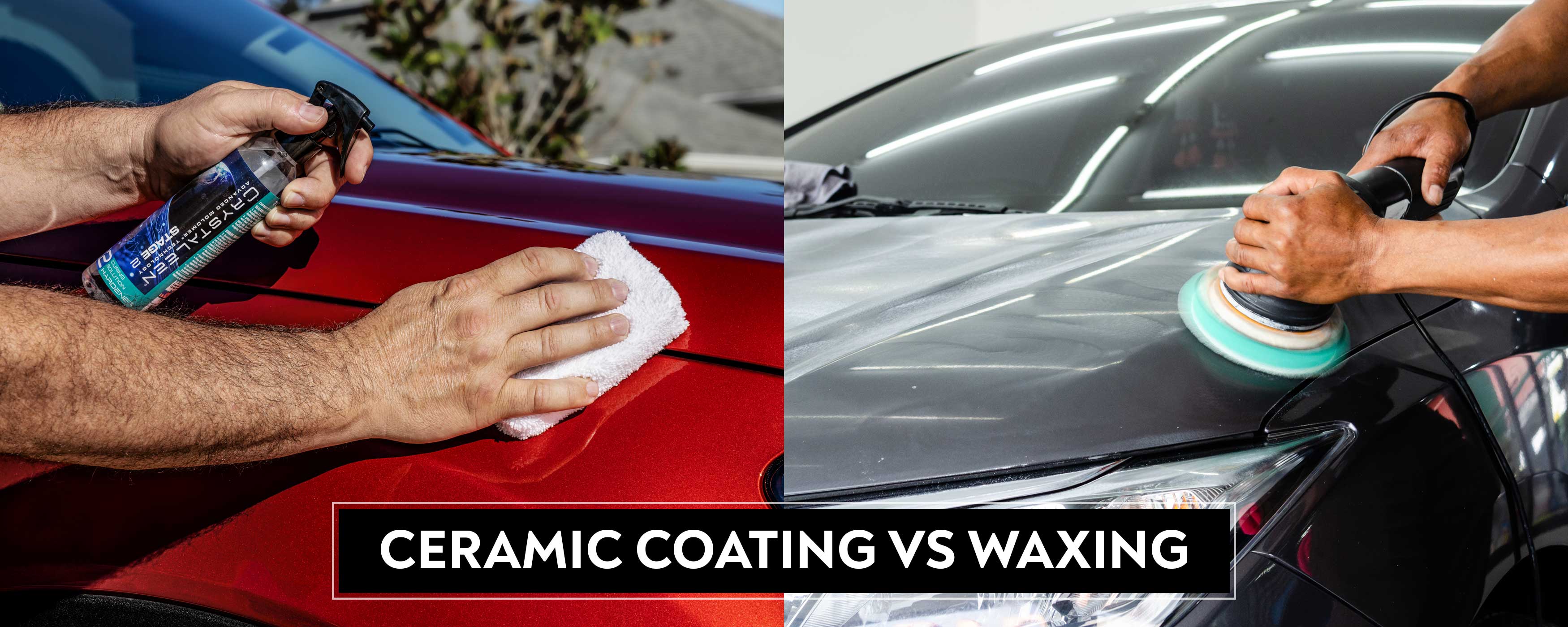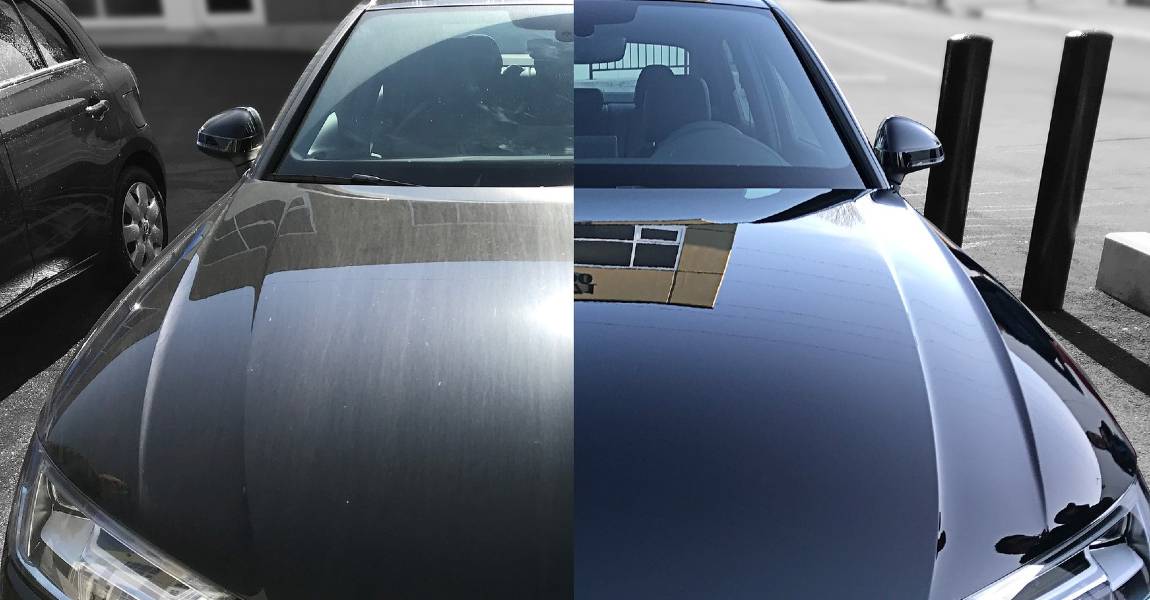Change Your Ride with Ceramic Coating: A Step-by-Step Process
Change Your Ride with Ceramic Coating: A Step-by-Step Process
Blog Article
Comprehending the Scientific Research Behind Ceramic Coating for Improved Car Resilience
The science of ceramic layer is revolutionizing vehicle upkeep by providing a formidable guard against extreme ecological variables. As we discover the detailed make-up and application process of ceramic coatings, we uncover the secrets behind their superior defense and durability (ceramic coating). How does this contrast to typical techniques, and what implications does it have for automobile maintenance in the lengthy term?

Structure of Ceramic Coatings
Ceramic layers are mainly composed of silicon dioxide (SiO2), which is obtained from all-natural products like quartz and sand. In enhancement to SiO2, ceramic coatings frequently integrate titanium dioxide (TiO2) for improved UV defense and raised resistance to ecological pollutants.
The formulation of ceramic coverings is a precise process where the concentration of SiO2 can substantially affect the layer's efficiency. Greater SiO2 web content commonly causes better durability and hardness, adding to the covering's capability to resist scratches and chemical etching. The equilibrium of elements is important; too much SiO2 can make the covering fragile, while also little can jeopardize its safety residential or commercial properties.
Manufacturers might additionally incorporate extra compounds, such as polysilazane, to improve adaptability and convenience of application. These additives enhance the layer's hydrophobic buildings, making certain water and pollutants bead off the surface area effortlessly. This crafted structure underscores the efficiency of ceramic finishes in protecting a vehicle's outside against a selection of unfavorable conditions.
Application Refine Explained
Using a ceramic covering to an automobile entails a number of crucial actions, each important to ensuring ideal adhesion and performance of the safety layer - ceramic coating. The process starts with an extensive wash and decontamination of the automobile's surface to eliminate dust, grime, and previous waxes or sealers. This step is important as any pollutants left on the surface area can hinder the finish's ability to bond successfully
Adhering to the initial cleansing, the following step includes brightening the lorry to eliminate any type of blemishes, such as swirl marks or scratches. Polishing makes sure a smooth surface area, which is vital for the finishing to stick properly and offer an uniform finish. After polishing, a surface prep work spray is made use of to get rid of any staying residues and make certain that the surface area is entirely clean.

Safety Benefits
Usually hailed for its phenomenal safety qualities, a ceramic coating uses various benefits that dramatically improve vehicle toughness. At its core, ceramic finishing forms a hard, semi-permanent obstacle over a vehicle's outside, which acts as a guard against different environmental dangers. This advanced layer of defense pop over to this web-site efficiently secures against UV rays, oxidation, and fading, keeping the car's initial paint and sheen. It lessens the threats positioned by harmful pollutants such as bird droppings, tree sap, and roadway grime, which, if left unattended, can lead to long-term damages.
Moreover, ceramic layers exhibit hydrophobic residential properties, implying they push back water and promote a self-cleaning effect. This characteristic minimizes the adherence of dust and mud, streamlining upkeep and cleansing procedures. The coating's resistance to chemical etching further guarantees that the car's surface stays unblemished in spite of direct exposure to extreme cleaner and contaminants.
In enhancement to these protective benefits, the ceramic finishing you can look here improves an automobile's visual charm by producing a glossy finish that accentuates color deepness and quality. This not just maintains the lorry's aesthetic charm however additionally adds to its long-term worth by preserving the honesty of its outside with time.
Comparing to Standard Methods
Unlike standard methods of lorry defense, such as shaving or sealants, ceramic finishings provide a more durable and durable service. Where waxes and sealers commonly supply a short-term layer of protection, often calling for reapplication every few months, ceramic coatings create a semi-permanent bond with the automobile's paint. This bond creates a safety layer that is resistant to ecological pollutants, UV damage, and small abrasions.
Conventional waxes are mainly made up of all-natural components like carnauba wax, giving a glossy finish however lacking the durable protective top qualities of ceramic finishings. Sealers, while synthetic and offering a little better durability than waxes, still drop short in comparison to the strength and chemical resistance of ceramic finishings. The advanced technology of ceramic layers integrates nanotechnology, which permits them to fill up in microscopic flaws in the paint surface, leading to a smoother and much more hydrophobic coating.
In terms of application, ceramic coverings call for a more careful procedure, often requiring specialist installation to make sure optimum performance. This contrasts with the fairly uncomplicated application of sealers and waxes, which can be applied in your home. Nonetheless, the superior security and visual improvement provided by ceramic finishings warrant the financial investment for those looking for lasting vehicle preservation.
Longevity and Maintenance
Exactly how does the longevity of ceramic coatings convert into ease of upkeep for automobile owners? The advanced solution useful content of ceramic finishings offers a durable safety layer on the car's surface area, which considerably extends the life-span of the vehicle's exterior finish.
Additionally, the hydrophobic nature of ceramic finishings enables water and other liquids to grain up and roll off the surface, bring dust and debris with them. While the layer itself is lasting, it is not completely maintenance-free. Hence, ceramic layers offer a useful equilibrium in between long-term toughness and streamlined maintenance for vehicle care.
Final Thought
Ceramic coatings, with their sophisticated chemical structure of silicon dioxide and titanium dioxide, supply a powerful obstacle against ecological damage, significantly boosting car durability. When contrasted to conventional approaches, ceramic finishes provide premium security versus UV rays, oxidation, and chemical etching - ceramic coating.
The formula of ceramic finishings is a thorough procedure where the focus of SiO2 can significantly affect the layer's efficiency.Applying a ceramic layer to an automobile includes several vital actions, each necessary to guaranteeing ideal adhesion and performance of the safety layer.Often hailed for its outstanding protective high qualities, a ceramic finish offers various advantages that significantly improve automobile durability. The advanced formula of ceramic layers provides a robust protective layer on the automobile's surface area, which dramatically extends the lifespan of the cars and truck's outside coating.Ceramic coatings, with their advanced chemical composition of silicon dioxide and titanium dioxide, provide a powerful barrier against environmental damage, substantially improving automobile longevity.
Report this page